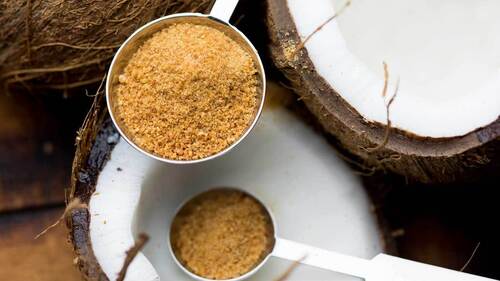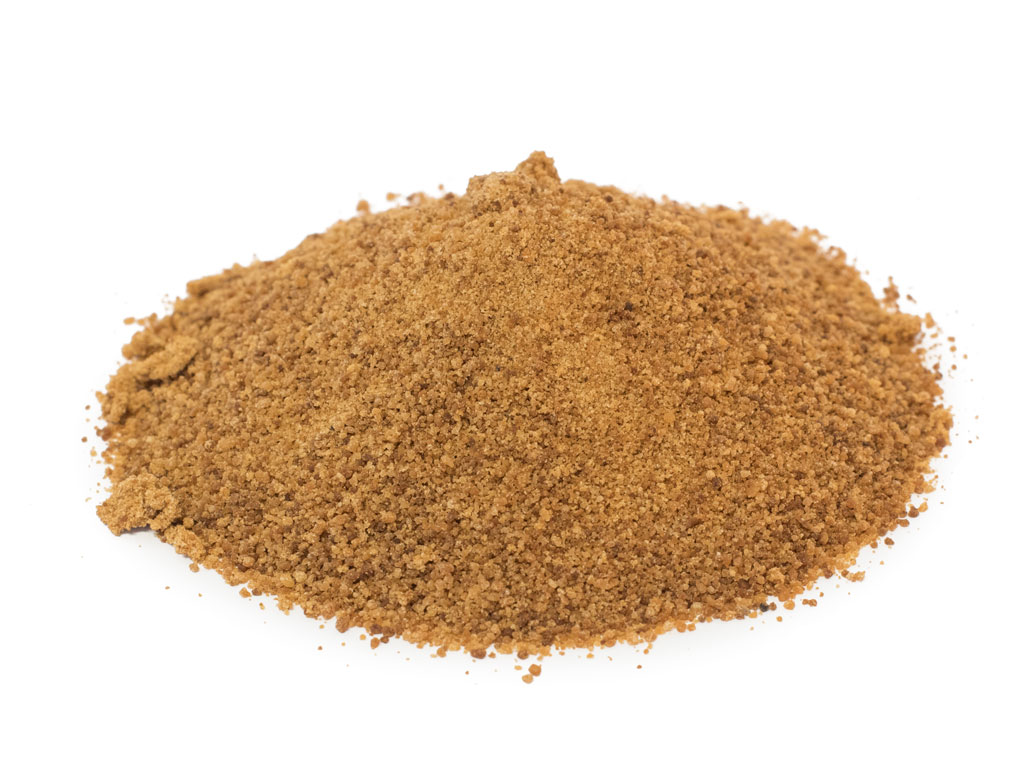Most individuals may not realize that coconut sugar, while a natural sweetener, has specific storage and transport requirements to maintain its freshness and quality. You need to understand the factors that affect coconut sugar shelf-life, including temperature, humidity, and exposure to air. Proper practices for storing and transporting coconut sugar can prevent clumping and preserve its flavor profile. This blog post explores how to best manage coconut sugar to ensure its longevity and efficacy in cooking and baking.
Table of Contents
The Science Behind Coconut Sugar Shelf-Life

Coconut sugar boasts a shelf-life influenced by its unique composition and exposure to environmental factors. Most commonly derived from the sap of the coconut tree, this sweetener is composed primarily of sucrose, with a mix of glucose and fructose. The presence of moisture, storage conditions, and packaging plays a vital role in determining how long coconut sugar remains usable, which can range anywhere from one to two years when stored correctly.
- Composition and Stability Factors
The composition of coconut sugar contributes significantly to its stability. It typically contains 85% carbohydrates, plus trace amounts of vitamins and minerals, which enhance its appeal as a healthier sugar alternative. Coconut sugar’s hygroscopic nature, meaning it absorbs moisture from the air, can lead to clumping if not stored properly. Consider the following storage tips:
- Store in an airtight container to prevent moisture uptake.
- Keep in a cool, dark place away from direct sunlight.
- Use silica gel packets to absorb excess moisture if desired.
- After purchasing, check for the manufacturer’s expiration date.
- Degradation: When and Why It Happens
Coconut sugar can degrade when exposed to unfavorable conditions, leading to changes in flavor and texture. Factors such as humidity, heat, and light can accelerate this degradation process. With high moisture content, coconut sugar can crystallize or become hard, affecting its usability and sweetness.
As coconut sugar absorbs moisture or is subjected to fluctuating temperatures, it may begin to ferment, developing off-flavors and unpleasant odors. Inappropriate storage methods, such as keeping it near heat sources or in improperly sealed containers, further exacerbate this issue. While coconut sugar is relatively stable, vigilance in storage practices can significantly extend its shelf-life and maintain its quality over time.
The Best Ways to Store Coconut Sugar

Proper storage significantly contributes to the longevity of coconut sugar. By adhering to specific guidelines, its rich flavor and nutritional benefits can be maintained. Effectively managing temperature, humidity, and exposure to light ensures that the coconut sugar remains fresh and usable for an extended period. Utilizing smart storage strategies allows enthusiasts and culinary experts alike to derive maximum enjoyment from this versatile sweetener.
- Ideal Storage Conditions for Longevity
For optimal freshness, coconut sugar thrives in a cool, dry place. Temperatures ranging between 68°F and 77°F are most suitable, avoiding areas with moisture or heat sources. Direct sunlight accelerates degradation, so a dark environment is recommended. Utilizing a pantry or cupboard not only helps to maintain the right conditions but also keeps it out of sight, reducing the temptation to expose it to humidity and fluctuating temperatures.
- Choosing the Right Container
The choice of container plays a significant role in preserving the quality of coconut sugar. Airtight containers are highly recommended, as they prevent moisture infiltration and protect the sugar from air exposure. Glass jars, plastic containers with tight seals, and resealable bags are all suitable options. Each container should be clean and completely dry before storing the sugar, as any residual moisture could lead to clumping or spoilage.
Transportation Tips for Preserving Freshness

To ensure optimal freshness of coconut sugar during transport, consider the following strategies:
- Use airtight containers to prevent moisture ingress.
- Opt for opaque packaging to protect against light exposure.
- Maintain a consistent, cool temperature throughout the journey.
- Avoid placing heavy items on top of packages to prevent crushing.
- Check for damages before delivery to prevent spoilage.
This approach will protect the coconut sugar and retain its quality throughout the transport process.
- Recommended Packaging Techniques
Airtight and moisture-resistant packaging plays a significant role in maintaining the integrity of coconut sugar during transport. Vacuum-sealed bags or heat-sealed pouches can substantially reduce exposure to air and moisture. Additionally, labeling packages clearly with the contents and a ‘Best Before’ date helps both transporters and consumers keep track of product freshness.
- Climate Considerations During Transit
Coconut sugar is sensitive to temperature fluctuations and humidity levels, which can affect its quality.
When transporting coconut sugar, it’s vital to assess the climate along the route. Exposure to high temperatures may lead to clumps and moisture accumulation, impacting texture and usability. Choosing breathable, temperature-regulating packaging can mitigate risks associated with excessive heat. During humid conditions, ensuring air circulation and using desiccants within packaging helps manage moisture levels.
Recognizing Signs of Spoilage
Identifying spoilage in coconut sugar is important for maintaining quality and flavor. Signs that indicate deterioration include changes in color, texture, or taste. Regularly examining stored coconut sugar helps ensure that it remains safe for consumption and retains its desirable sweetness. By knowing what to look for, one can avoid using products that may negatively impact dishes or health.
- Visual and Textural Indicators
Visual and textural indicators of spoilage in coconut sugar include clumping, changes in color, or the presence of moisture. Fresh coconut sugar appears golden brown and powdery. If it becomes hard or exhibits dark spots or white crystals, these signs suggest that moisture may have compromised its integrity or that it has started to ferment. In these cases, it’s advisable to discard the product.
- Taste Testing: When to Throw It Out
When coconut sugar is suspected of spoilage, performing a taste test can help determine if it is still good to use. If the sugar has developed an off taste or a sour flavor, it should be discarded. Fresh coconut sugar is known for its rich, caramel-like sweetness, so any deviation from this profile is a clear indication that it may no longer be suitable for consumption.
If someone tastes coconut sugar and notices a bitter or fermented flavor, it’s a strong signal that spoilage has occurred. Natural variations in taste can happen due to processing, but significant shifts typically indicate that the sugar has deteriorated. Therefore, if the taste diverges too far from its original sweetness, it’s best to err on the side of caution and dispose of it—ensuring both safety and quality in culinary applications.
Expert Recommendations for Optimal Use
Coconut sugar offers a delightful depth of flavor to various dishes, making its optimal use necessary for culinary enthusiasts. Experts suggest utilizing it as a one-to-one substitute for brown sugar in recipes, allowing chefs to seamlessly integrate its caramel notes into desserts and savory meals alike. For those seeking a healthier alternative, they recommend pairing it with natural sweeteners like maple syrup or honey, providing a layered sweetness that enhances flavors without overwhelming them.
- Integrating into Culinary Practices
Chefs often highlight the versatility of coconut sugar in both sweet and savory recipes. It works well in marinades, salad dressings, and baked goods, imparting a rich flavor profile. Furthermore, it can enrich hot beverages like coffee and tea, adding a hint of caramel that plain sugar cannot replicate.
- Best Practices for Stockpiling
Stockpiling coconut sugar requires attention to environmental factors and packaging techniques. Ideally, she recommends keeping it in airtight containers in a cool, dry place, protecting it from moisture, which can lead to clumping and spoilage. Purchasing larger quantities can yield cost savings, but separating into smaller containers can help maintain freshness over time.
To effectively stockpile coconut sugar, she advises buying from reputable brands with clear expiration dates and using a first-in, first-out approach during storage. Labeling containers with purchase dates can help keep track of usage, and regularly inspecting for any signs of clumping or moisture ensures the sugar remains in optimal condition. By monitoring conditions and using proper separation techniques, they can maintain the quality of their stockpile while having a steady supply for culinary creations.
Final Words
With this in mind, those seeking to prolong the shelf-life of coconut sugar should follow the recommended best practices for storage and transportation. They should keep it in a cool, dry place away from direct sunlight, ensuring the container is airtight to prevent moisture absorption. When transporting, they ought to choose packaging that safeguards against temperature fluctuations and humidity. By adhering to these guidelines, they can maintain the quality and flavor of coconut sugar for an extended period.
